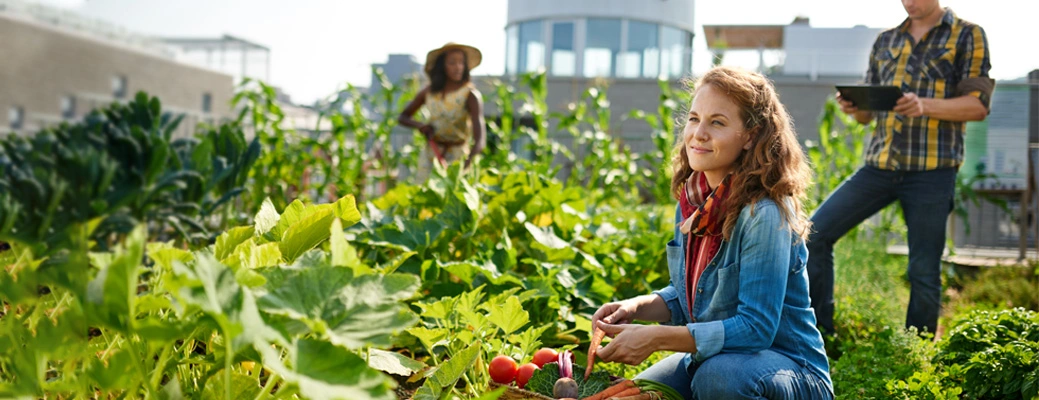How to Start an Urban Farm


Kill your lawn, grow food, start an urban farm. It’s a new mantra of farmers in cities across the country. Urban farmers are redefining how and where we grow our food. Like any new venture, starting an urban farm might feel like a daunting and difficult task. Not only do you have to forfeit your lawn or find land to farm in the city, but the land has to be suitable for growing food, too. Looking to get your own urban farm started? Consider these steps:
Develop a plan that will help layout your vision and farming goals. Creating an urban farm from the ground up requires an initial investment of time, resources and hard work. Ask yourself these questions:
Maybe you want to convert your backyard into the perfect growing space. Even if you have little to no yard but dream of lush fields, you can still bring your vision to life with the use of stackable containers or under-utilized areas like rooftops or balconies.
Or if you want to keep your yard intact, look for plots of land that are available for rent or sale in your city. But before you get those seeds in the ground, look at the site’s security, access to water, soil quality and the distance you’ll have to travel to get there. Secondly, check for zoning laws in your state. Some states prohibit land use within city limits for agricultural use. You’ll also want to check your state laws if you plan to have chickens, bees or goats on your plot of land.
Before you get your hands too dirty, assess the soil where you’ll grow your farm. It’s important to find out if there’s too much clay, high acidity or if there’ve been high amounts of chemicals used on the soil in the past. If you find your soil isn’t prime for planting, consider building raised beds or finding a different location for your urban farm.
Here’s the fun part. Decide what you want to grow. You’ll need to take into account the length of the growing season, frost dates and general climate in your area. Perhaps you want to grow veggies or maybe your focus is herbs or even flowers. Create a spreadsheet that details planting and transplanting dates for each crop, expected harvest dates and what crops will follow each planting. This will help keep your urban farming organized throughout growing season.
Take a tour of other urban farms and gardens in your area and learn what’s been successful or not for them. This is the best way to learn and to ask all your questions! How many days are in the typical growing season? What’s the best way to utilize greenhouses? What to plant and when? If you’re looking to take your urban farm beyond personal use, you’ll want to explore niches in your local market so you can standout against the crowd. Lean on your fellow urban farmers to get up and farming!